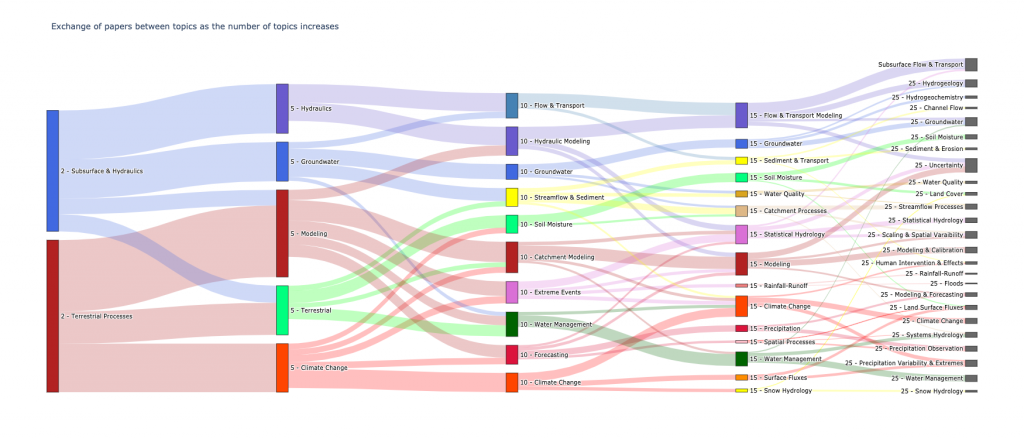Using Natural Language Understanding for Bibliometric Analyses of Hydrologic Literature
Hydrologic research generates large volumes of peer-reviewed literature across a number of evolving sub-topics. It’s becoming increasingly difficult for scientists and practitioners to synthesize this full body of literature. We explore topic modeling as a form of unsupervised learning applied to 42,154 article-abstracts from six high-impact (Impact Factor > 0.9) journals – Water Resources Research (WRR), Hydrology and Earth System Sciences (HESS), Journal of Hydrology (JH), Hydrological Processes (HP), Hydrological Sciences Journal (HSJ), Journal of Hydrometeorology (JHM), to provide a high-level contextual analyses of hydrologic science literature since 1991. We used a hybrid objective-subjective approach to label a number of broad topics in this body of literature, and used these labeled topics to analyze topic trends, inter-topic relationships, and journal diversity. The methods and outcomes of this endeavor are potentially beneficial to scientists and researchers who aim to gain a contextual understanding of the existing state of hydrologic science literature. In the long term, we see topic modeling as a tool to help increase the efficiency of literature reviews, science communication, and science-informed policy and decision making regarding global hydrological systems.
Learn More: https://eartharxiv.org/2sy7a/

Using HydroMiND
- Select year(s) of articles to display
- Select journal(s) to display
- Select minimum strength of paper connections
- Select topic(s) to display
Understanding HydroMiND
- Each node is a journal article
- Each color represents a major topical theme
- Edges are topical connections between articles
- Distance represents the similarity between papers and authors